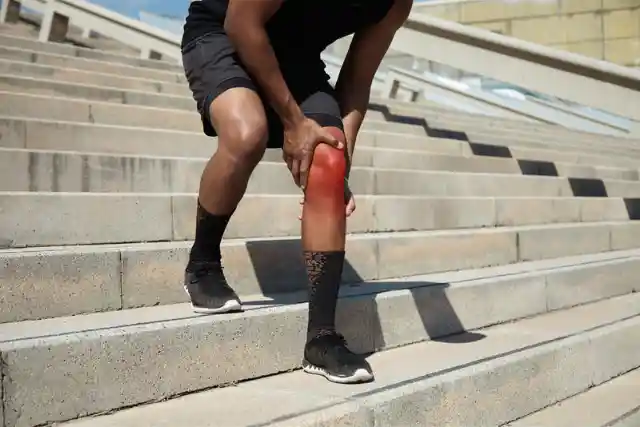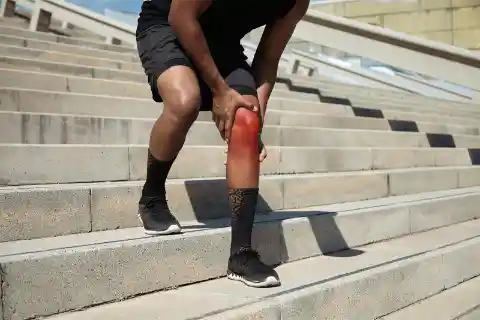You've just begun a new running regimen and are in terrific shape. You start running farther, quicker, and more frequently. You are suddenly struck by pain in your knee, which does not go away. With each run, the pain worsens, and you realize you have Runner's knee. Although there are several underlying causes of runner's knee, the most common symptom is pain at the front of the knee, around the kneecap, or behind the kneecap, especially when moving, like when squatting or running, or when sitting for an extended period of time. It most frequently affects people who repeatedly stress the patellofemoral joint while participating in running-related sports.


Factors that can trigger it
1. Overuse. Performing several high-stress activities, such as lunges and plyometrics, or repeatedly bending your knee can irritate the tissues in and around your kneecap. 2. Trauma to patella. Direct blow or accident that causes a knee injury. This will cause severe compressive stresses of the kneecap into the groove, causing inflammation in the area. 3. Misalignment of bones. It can place too much pressure on certain areas if any of the bones, including the kneecap, from your hips to your ankles are out of alignment. If this happens, your kneecap won't slide easily through its groove, which could hurt. 4. Gender. Due to their wider hips and unique knee alignment compared to men, women are more susceptible to developing runner's knee. 5. Having issues with your feet. Such as fallen arches (flat feet), overpronation, or hypermobile feet (where the joints in and surrounding them move more than they should) (which means your foot rolls down and inward when you step). These frequently alter your gait, which might cause knee pain. 6. Weak or imbalanced muscles in the thighs. When you bend or flex the knee joint, the large muscles at the front of your leg known as the quadriceps keep your kneecap in place. Your kneecap might not stay in the proper position if they are tight or weak. 7. Disorder known as chondromalacia patella causes the cartilage under your kneecap to deteriorate.Treating runner’s knee
Stretch Your Knee Muscles
Stretching should be done after a brief warm-up before running. If you're worried about your knees, you should pay attention to your quadriceps, hamstrings, and calves. Your capacity to stretch those muscles can be improved by simultaneously contracting the opposing muscle group. For instance, tense your quadriceps while stretching your hamstrings.Cold therapy
Try applying ice to your knees if they are hurting from running. Many professional athletes adopt the practice of spending five to ten minutes, or longer if tolerated, submerged in icy water. Be prepared for a frigid experience and consult your doctor before trying this!Keep yourself hydrated
Regardless of the type of exercise you perform, staying hydrated is crucial for healthy, well-functioning muscles. Before you begin the road and right away when you arrive home, make sure to drink a full glass of water. Drink plenty of water the day before a big run, and stay away from alcohol.Strengthen your core and leg muscles
Strengthening is crucial, and this goes for the core and glutes as well as the hamstrings and quadriceps. Jumping or other explosive actions used in plyometric strength training can also help prevent injuries. It can also be quite beneficial to do lightweight training twice a week for as little as 10 to 15 minutes.Your knees need a break
It's a good idea to incorporate different types of cardio into your regimen a few times per week, especially if you are prone to injuries. Repetitive strain may be lessened by doing this. One choice is to cycle. Another exercise you may perform in your house is circuit training.Bracing
It will take some time to correct the muscle imbalances in and around your knee. Additionally, you might be more prone to episodes of patellofemoral syndrome due to the structure of your bones. A knee brace can ensure good running knee mechanics. A patellofemoral brace can usually include a buttress, or pad, that lies on the outside of the knee cap and helps to maintain your kneecap centered in the groove. There are numerous braces available in various sizes and quality levels. It is best to speak with your physical therapist before making a purchase.If you try these methods and your knee still hurts, consult your doctor about seeing a specialist, such as an orthopedic surgeon. Although it's uncommon, severe cases of runner's knee may require surgery. To distribute stress through the joint more evenly, an orthopedic surgeon may remove or replace damaged cartilage as well as, in extreme circumstances, adjust the location of your kneecap.